Buy Cauliflower Seeds from various brands at DesiKheti:
Buy Advanta Cauliflower Seeds Online
Buy East West Cauliflower Seeds Online
Buy HM Clause Cauliflower Seeds Online
Buy Indo American Seeds Cauliflower Seeds Online
Buy JK Seeds Cauliflower Seeds Online
BuyNamdhari Seeds Cauliflower Seeds Online
Buy Noble Seeds Cauliflower Seeds Online
Buy Nongwoo Cauliflower Seeds Online
Buy Nuziveedu Seeds Cauliflower Seeds Online
Buy Pan Seeds Cauliflower Seeds Online
Buy Sakata Cauliflower Seeds Online
Buy Seminis Cauliflower Seeds Online
Buy Sungro Seeds Cauliflower Seeds Online
Buy Syngenta Cauliflower Seeds Online
Buy Takii Seed Cauliflower Seeds Online
Buy Tokita Cauliflower Seeds Online
Buy Welcome Seeds Cauliflower Seeds Online
Cauliflower is one of the most significant and extensively grown vegetable crops in India. It is commonly called as "Phool Ghobi, Ghobi, Gobi and Hoo kosu in India. The word "Cauliflower" was derived from the Latin words "caulis" (cabbage) and "floris" (flower). The Scientific name of Cauliflower is Brassica oleracea var. botrytis. Cauliflower is a member of the Cruciferae family and originated in the Mediterranean area.
Gobhi is grown mainly for its soft, white curds, which are used in various recipes like curries, soups, and pickles. Phool gobhi can be canned for long-term storage. In areas where Cauliflower is produced in large quantities, the curds are dried and kept for off-season use, guaranteeing year-round availability.
Cauliflower is a nutritional powerhouse. Phool Gobhi has a lot of potassium, sodium, iron, phosphorus, calcium, and magnesium, among other important minerals. Hoo Kosu is also low in cholesterol and heart-healthy because it is high in fiber, low in cholesterol, and packed with vitamins A and C. Hoo Kosu has long been used as an antacid, blood purifier, and natural treatment for ailments including scurvy. Furthermore, studies have suggested that persons with diabetes can benefit from Cauliflower.
China leads the world in Cauliflower production, closely followed by India. Of the Indian states, West Bengal is the biggest producer of Phool gobhi, contributing about 21.22% of the country's total gobhi production in 2021–2022. Other significant Phool gobhi-producing states are Madhya Pradesh, Bihar, Gujarat, and Haryana.
Climate for Cauliflower Production
Climate has a significant impact on cauliflower growth, as it affects all stages of the Phool gobhi plant's life cycle, from vegetative development to curd formation and gobhi seed generation. Different types of Phool gobhi crops require different temperatures since they are extremely sensitive to both photoperiod and temperature. Changes in temperature can have a substantial effect on the Phool Gobhi plant's transition from the vegetative to the curding phase because it is a thermosensitive species.
Phool gobhi needs colder temperatures—ideally between 5°C and 28 to 30°C to start the curdling process. If temperatures stay above this optimal range, the Phool Gobhi plant will continue to grow vegetatively without forming any curd. During the Hoo Kosu curd initiation phase, it is important to maintain consistent temperatures. Variations in temperature might result in low-quality curd. Physiological conditions in Phool gobhi crops, such as blindness, leafiness, rice-like or yellow curds, and blindness, can also result from temperature deviations.
In general, Cauliflower grows best in a temperature range of 15-20°C per month, with a maximum of 25°C and a minimum of 8°C. However, each Phool gobhi cultivar has different temperature requirements. Tropical varieties can thrive even at 35°C, while in temperate regions, young Hoo Kosu seedlings may stop growing if temperatures rise slightly above 0°C.
Soil for Cauliflower Farming
Cauliflower grows well in a variety of soil conditions, including sandy and clay loams. The optimal soil for Phool Gobhi plant growth should be nutrient-rich and well-drained. Early Phool gobhi crops benefit from lighter soils that provide better drainage during the rainy season, whereas mid-season and late Phool Gobhi crops thrive in medium to heavy soils.
Due to the Hoo Kosu plant's sensitivity to high acidity, the optimal pH range for gobhi soil is between 5.5 and 6. Aside from having distinct dietary requirements, Phool Gobhi also needs a lot of magnesium and is especially susceptible to boron and molybdenum deficiency.
Land Preparation for Cauliflower Farming
Proper land preparation is crucial for successful cauliflower cultivation. The soil should be tilled to a fine texture, typically achieved with 1 to 2 rounds using a soil-turning plough, followed by 3 to 4 rounds with a disc plough. During the final ploughing, incorporate 25 to 30 tons per hectare of farmyard manure (FYM) as a basal dose to enrich the soil.
Cauliflower Seeds and Propagation Material
Selection of Cauliflower Variety: It is important to consider the growing season while selecting a Hoo Kosu cultivar. A few other factors to consider while choosing a gobhi variety are the local climate, the kind of soil, the availability of irrigation, consumer preferences, and the existence of diseases and pests. Selecting the right Phool gobhi variety ensures a successful harvest tailored to specific growing conditions.
Procurement of Cauliflower Seeds: Source your Cauliflower seeds from reputable and verified sources to guarantee premium yields. Desikheti provides a wide selection of high-quality seeds that may be delivered right to your home.
Cauliflower Seed rate:
- Early maturity: 600 - 750g of Cauliflower seeds per hectare
- Mid-early maturity: 500g of Cauliflower seeds per hectare
- Mid-late maturity: 400 g of Cauliflower seeds per hectare
- Late season (Snowball type): 300 g of Cauliflower seeds per hectare
Cauliflower Seed Treatment: For optimal growth and disease prevention, Cauliflower seeds should be properly treated before sowing. While hybrid and open-pollinated (OP) Cauliflower seeds from the private sector are often pre-treated with chemicals, it's essential to treat all other untreated gobhi seeds with Captan or Thiram at a rate of 2.5 g per Kg of Phool gobhi seeds. This treatment helps protect the Cauliflower seeds from fungal diseases, ensuring a healthy start for your crop.
Time of Sowing Cauliflower seeds
Group I - Early maturity
Group I (a): Sow Cauliflower seeds in May-June.
Group I (b): Sow Cauliflower seeds in the first fortnight of July.
Group II - Mid-early maturity: Sow Cauliflower seeds in July-August.
Group III- Mid-late maturity: Sow Cauliflower seeds in September.
Group 4 - Late season (Snowball type): Sow Cauliflower seeds in October.
Method of Sowing Cauliflower seeds
Cauliflower is generally cultivated as a transplanted crop, and there are two main methods for raising seedlings:
- Raised Beds method of sowing Cauliflower seeds
- Protray method of sowing Cauliflower seeds
Depending on the variety, temperature, and quality of the soil, Cauliflower seedlings are usually ready for transplanting three to six weeks after sowing Hoo Kosu seeds. Early Cauliflower seedlings that are 5-6 weeks old tend to establish better and have lower mortality rates in the field. For mid-season and late varieties, 3-4 week-old Cauliflower seedlings are ideal for transplanting.
Avoid transplanting overmature Cauliflower seedlings, as they are prone to producing button-like curds. Cauliflower seedlings can be planted in the field either in pits (for hilly areas) or on ridges and furrows (for plains). In hilly regions, space the pits 45 cm apart. In plains, form ridges and furrows 60 cm apart.
Planting distance may vary depending on the Gobhi variety, climate, and soil. Early cauliflower seedlings are typically planted with a spacing of 45 cm between rows and 30 cm between plants. Mid-season and late gobi varieties require wider spacing, usually 60 x 40 cm and 60 x 45 cm, respectively.
Nutrient Management for Cauliflower Farming
The nutrient requirements for the main field should be based on soil tests and the specific needs of the Hoo Kosu crop. Generally, 150 kg of nitrogen, 60 kg of phosphorus, and 50 kg of potash per hectare are applied. Apply the full dose of phosphorus, potash, and boron during the final ploughing, and split the nitrogen application into two doses: one 30 days after transplanting Phool gobhi seedlings and the other 45 days after transplanting gobhi seedlings.
Additionally, if the soil is deficient in boron or molybdenum, borax at 15 kg/ha and ammonium molybdate at 15 kg/ha should be applied to ensure optimal growth of Phool Gobhi plants.
Irrigation management for Cauliflower Cultivation
Cauliflower Nursery:
It is best to give light irrigation to the Cauliflower seedlings with a watering can over the grass mulch throughout the early stages of the Phool gobhi plant's growth in the nursery. After the Phool gobhi plants are 15 to 20 days old, water them through furrows to provide the right amount of moisture without flooding the soil.
Cauliflower Main Field:
- First Irrigation: As soon as the Cauliflower seedlings are transplanted, water the field to aid in their establishment.
- Subsequent Irrigation: The type of soil, weather, and variety of Phool gobhi all affect how often and how much irrigation is required for Phool gobhi crops. Regular, light watering is necessary to maintain ideal moisture levels, especially during the key growth and curd development stages of Cauliflower.
- Curd Development: Consistent moisture is crucial during the curd formation of gobi. However, avoid heavy irrigation as the Phool Gobhi heads mature to prevent issues like rot.
- Irrigation Method: In regions with significant rainfall, the furrow method is recommended, as planting gobhi is typically done on ridges to manage water flow and prevent waterlogging.
Intercultural Operations for Cauliflower Farming
Regular intercultural operations like weeding and hoeing are required to maintain the Phool gobhi crop free of weeds and guarantee adequate aeration of the root system. Since Phool gobhi roots are shallow, it's critical to use shallow hoeing to get rid of weeds without damaging the Cauliflower roots.
The first 30 to 50 days following transplanting Phool gobhi seedlings are the most crucial for controlling weeds. The best results are usually obtained while hoeing and weeding between 30 and 45 days after transplanting Cauliflower seedlings.
In medium-heavy and clay soils, crust development might occur after the first irrigation. Breaking this crust is necessary for optimal water and air penetration into the root system, which supports healthy gobi plant growth.
Earthing Up
Earthing up is essential during the rainy season to shield the Phool gobhi roots, which can become exposed following a period of heavy rain. To ensure the roots stay covered and maintained, this should be done four to five weeks after the transplantation of Phool gobhi seedlings.
Blanching in Cauliflower Farming
Blanching is a key practice for producing high-quality cauliflower curds. This process protects the gobhi curds from yellowing due to direct sunlight, which can also lead to a loss of flavour. Blanching is particularly important for early and mid-season Hoo Kosu varieties with a spreading, open plant structure.
Tie the tips of the outer leaves of Cauliflower over the curds when they are fully developed to shield them from the sun. Alternatively, place a Phool gobhi leaf over the curd 4-5 days before harvest to protect it. Some Hoo Kosu varieties are naturally self-blanching, with curds that are shielded by the plant's inner leaves, requiring no additional blanching efforts.
Pest and Disease Management for Cauliflower
Common Pests of Cauliflower
Cauliflower crops are vulnerable to various pests, each causing distinct types of damage. Effective management is crucial for maintaining healthy Phool gobhi plants and maximising yields. Here's a look at the common pests affecting Phool gobhi and their impact:
Diamondback Moth (Plutella xylostella)
- The young caterpillars of the diamondback moth feed on the epidermal layers of Phool gobhi leaves, resulting in white patches.
- They also chew holes in the undersides of gobhi leaves, causing a withered and skeletonized appearance. Infestations are typically more severe during dry seasons.
Aphids (Brevicoryne brassicae)
- Aphid nymphs and adults suck sap from the gobhi plant, weakening it and causing a loss of vigour. Their excretion of honeydew leads to sooty mold, which impairs photosynthesis. Severe infestations can result in the complete death of the Phool Gobhi Plant.
- On larger cauliflower plants, damage manifests as curling and yellowing of Hoo Kosu leaves, stunted growth, and deformed heads. Infested gobhi seedlings become distorted and unsuitable for transplanting.
Cutworms (Agrotis segetum)
- Cutworms damage Cauliflower seedlings by cutting them at ground level and dragging them into the soil.
- They also nibble on Gobhi plant tubers, which may necessitate replanting.
Cabbage Butterfly (Pieris brassicae)
- Young caterpillars feed gregariously, skeletonizing the Phool gobhi leaves. As they mature, they move to adjacent gobhi plants or fields, leading to widespread defoliation and substantial yield losses.
Cabbage Semilooper (Trichoplusia ni)
- These caterpillars initially scrape and feed on Phool gobhi leaves, eventually defoliating the entire gobhi plant and leaving only the midribs and main veins.
- Damage is often more pronounced in Cauliflower nurseries than in the main field.
Leaf Webber (Crocidolomia binotalis)
- Young larvae feed gregariously on Phool gobhi leaves and later web them together. This feeding behaviour can lead to the rotting of gobhi curds.
Head Borer (Hellula undalis)
- Head borers begin by mining into Cauliflower leaves and feeding on chlorophyll.
- As they grow, they bore into the stems and heads of Phool gobhi, often resulting in plants riddled with caterpillars.
Mustard Sawfly (Athalia lugens)
- Grubs of the mustard sawfly bite holes into young Phool gobhi leaves, skeletonizing them.
- Cauliflower Seedlings often succumb to the attack, while older plants may fail to produce gobhi seeds if infested.
Painted Bug (Bagrada cruciferarum)
- Both nymphs and adults of the painted bug suck sap from gobhi leaves and shoots, causing wilting and loss of vigour.
- Affected gobhi leaves develop pale or whitish markings before turning brown.
Tobacco Caterpillar (Spodoptera litura)
- These nocturnal caterpillars feed on Cauliflower leaves and fresh growth, causing extensive damage.
- Young caterpillars are gregarious, creating holes and skeletonizing tender Phool gobhi leaves, eventually consuming entire broad leaves.
Cabbage Flea Beetle (Phyllotreta cruciferae)
- Flea beetle larvae live in the soil and feed on Cauliflower plant roots, while adult beetles create round holes in leaves.
- Infested gobhi plants emit a decaying odour.
Common Diseases of Cauliflower
Cauliflower is prone to several diseases that can impact plant health and yield. Understanding these common diseases and their symptoms is crucial for effective management and maintaining a healthy Phool gobhi crop.
Club Root (Plasmodiophora brassicae)
- Club root causes gobhi plants to develop pale green to yellowish leaves initially.
- As the disease advances, Cauliflower plants may wilt during hot, sunny days but recover at night. This condition results in stunted Phool gobhi plant growth and reduced head size.
- In severe cases, spindle-like, spherical, or knobby swellings form on the gobi plant roots, which can coalesce and cover the entire root system.
Downy Mildew (Peronospora parasitica)
- Downy mildew presents as small, pale yellow angular spots on the upper surface of Phool gobhi leaves, with a downy fungal growth on the underside.
- Purplish-brown spots appear on the Cauliflower leaf undersides, which eventually merge, causing leaves to shrivel and dry up prematurely. Affected gobi curds may show brownish discolouration at the top and can develop dark brown, depressed lesions with downy fungal growth.
Powdery Mildew (Erysiphe polygoni)
- Powdery mildew is characterised by white, powdery spots on the upper surfaces of ghobi leaves, stems, and flowers.
- As the infection progresses, the mildew can cover the entire surface of the gobhi plant parts.
Alternaria Leaf Spot (Alternaria brassicola, A. brassicae, A. raphani)
- Alternaria leaf spot begins with small, dark-coloured spots on the Phool gobhi leaves that enlarge and become circular.
- These spots eventually merge, leading to significant leaf blighting of Cauliflower.
Black Rot (Xanthomonas campestris pv. campestris)
- Black rot starts as angular, chlorotic (yellow) areas near the Hoo Kosu leaf margins. The yellowing spreads to gobhi veins and the midrib, forming characteristic 'V-shaped spots.
- The gobi veins turn brown and eventually black, with blackening extending to the midrib, petiole, and stem. Advanced infections may reach the Hoo Kosu root system, causing vascular blackening and bacterial ooze.
- Early Phool gobhi infections can lead to plant wilting and death, while late infections result in soft rot and Cauliflower plant death.
Wire Stem (Rhizoctonia solani)
- Wire stem often occurs in overcrowded Cauliflower seedlings grown in unsterilized soil.
- It causes water-soaked tissues and results in the death or poor growth of affected Hoo Kosu seedlings.
- Older Phool gobhi plants may experience bottom rot, head rot, and root rot.
Cauliflower Mosaic (Cauliflower Mosaic Virus)
- The cauliflower mosaic virus causes mottled leaves. Infected gobi plants are stunted, and central leaves are smaller.
- Mild infections result in small, poor-quality gobhi heads, while severe infections can lead to Hoo Kosu plant death.
Stalk Rot (Sclerotinia sclerotiorum)
- Stalk rot primarily affects late varieties of gobhi.
- Infection begins at the lower Phool gobhi leaf petioles touching the ground, leading to dark brown to black necrotic lesions. These lesions are covered with fluffy fungal growth in cool, humid conditions.
- The rot can progress from the petiole to the stalk, potentially girdling the Phool gobhi stem at ground level and affecting the Cauliflower curd.
Harvesting Cauliflower
To ensure the best quality, harvest gobi curds as soon as they reach peak maturity and compactness. It's preferable to harvest slightly early rather than wait too long if you're unsure about maturity. Delaying harvest can lead to elongated flower stalks and loose, over-matured gobhi curds that become fuzzy, ricey, and deteriorate in quality. Such Phool gobhi curds should be discarded from market consignments as they wilt quickly and diminish the overall appearance.
When harvesting, cut the gobhi curd along with a portion of the stalk and leave enough jacket leaves to protect the gobhi curd. The extent of leaf trimming depends on your packing and transport methods. For crate packing, most leaves are removed, leaving only small leaf stalks near the gobi curd. For packing in bags, keep the inner leaves that cover the gobhi curd intact and remove only the outer leaves.
Ensure that enough Cauliflower leaves and stalk portions are retained during transport. Trim additional leaves after unloading or before marketing. Harvesting is best done in the late evening or early morning to keep the Phool gobhi curds fresh and firm.
Cauliflower Yield
Cauliflower yield can vary widely depending on the variety, maturity group, and growing season:
- Early Varieties: 80-120 quintals of Cauliflowers per hectare
- Mid and Late Season Varieties: 150-200 quintals of Cauliflowers per hectare
- Snowball Group Varieties: Up to 250-300 quintals of Cauliflowers per hectare
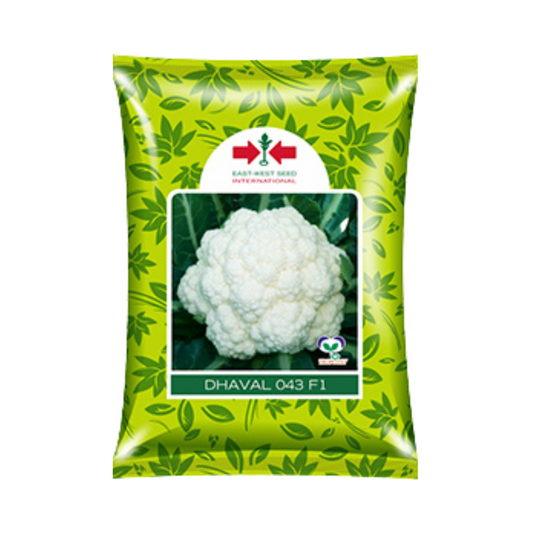 Sold out
Sold out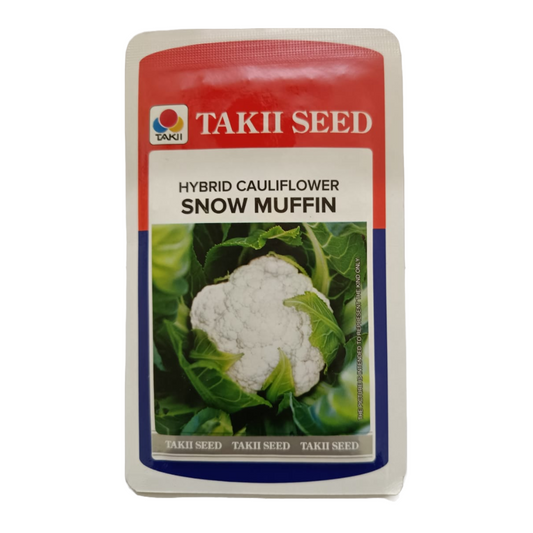 Sold out
Sold out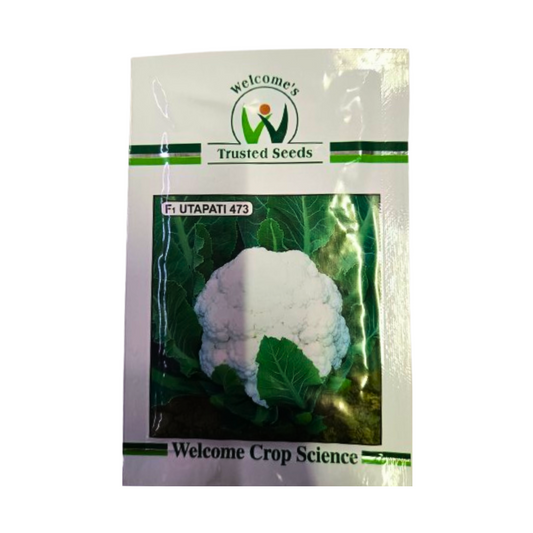 Sold out
Sold out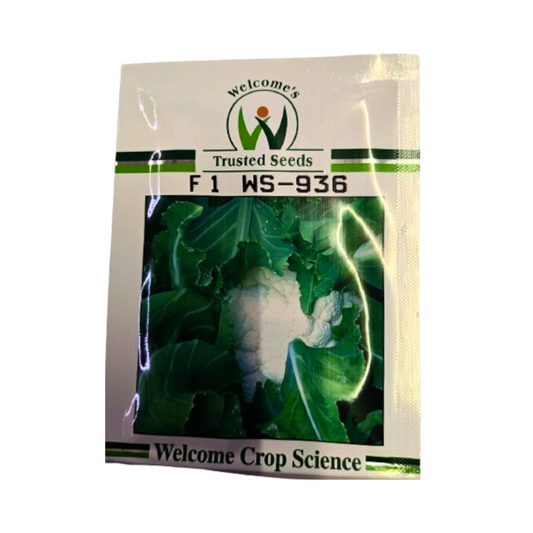 Sold out
Sold out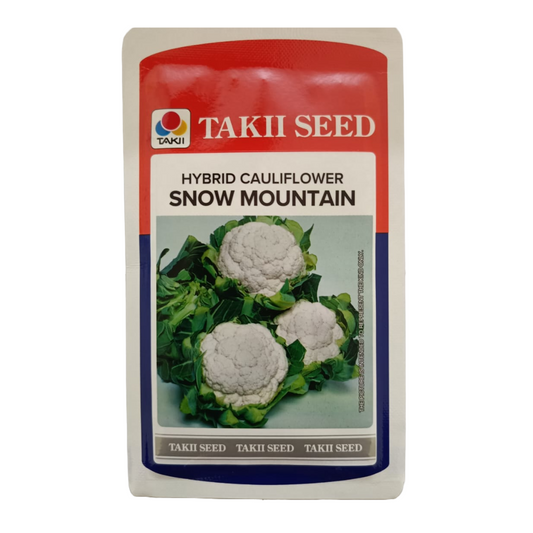 Sold out
Sold out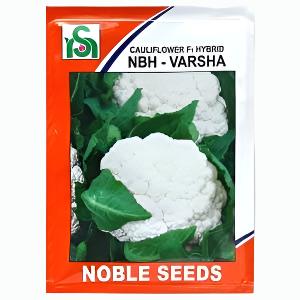 Sold out
Sold out Sold out
Sold out Sold out
Sold out Sold out
Sold out Sold out
Sold out Sold out
Sold out Sold out
Sold out Sold out
Sold out Sold out
Sold out Sold out
Sold out Sold out
Sold out Sold out
Sold out Sold out
Sold out Sold out
Sold out Sold out
Sold out Sold out
Sold out Sold out
Sold out Sold out
Sold out Sold out
Sold out























